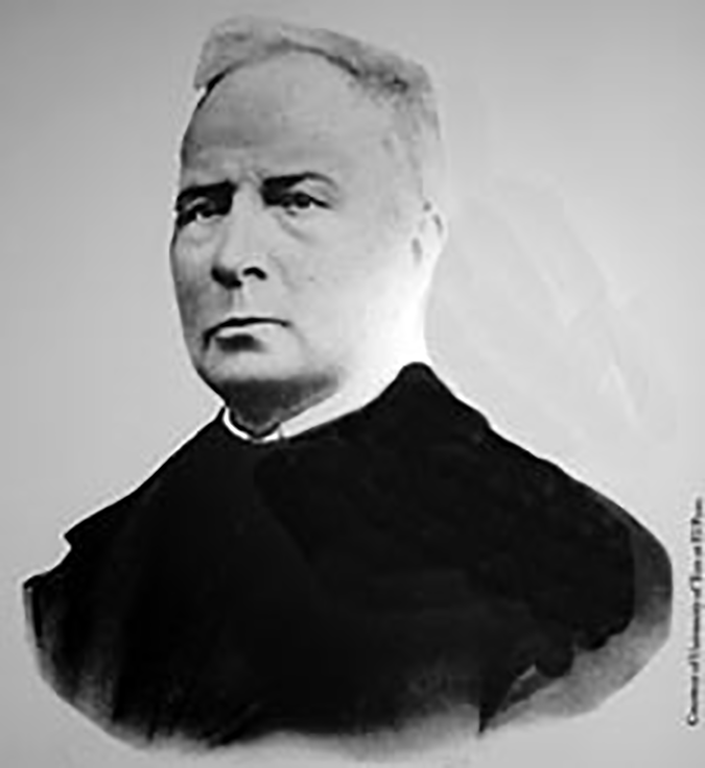By most accounts, Father Ortiz “appeared to be the person best qualified for the job” of guiding repatriates from New Mexico back into the Mexican fold.19 In many ways, the trajectory of his life and career paralleled that of Padre Martínez of Taos, without the personal loss of family members. Rather than officiating over the Taos parish, Father Ortiz was the cura of the El Paso parish. Born in Santa Fe in 1813, he was a son of New Mexico. Like Padre Martínez, he studied at the Durango seminary during its “golden age” of learning. Nationalist rhetoric and fervor undergirded Ortiz’s ecclesiastical education.

Courtesy of Basilica of San Albino
Ortiz was also a dedicated opponent of the American occupation of New Mexico under Kearny. He was twice arrested by U.S. forces for his efforts in opposition to their occupation of the territory. Not only was he a vocal critic, he also led military resistance at the Battle of Brazito, not far up the Rio Grande from El Paso del Norte. Due to his support of the Mexican cause, he handily won election as the federal deputy representing Chihuahua in Mexico City. As fate had it, New Mexico and Chihuahua became diametric opposites in the eyes of the Mexican legislature after 1846. Indeed, Manuel Armijo had to use highly diplomatic terminology in his communications with Mexico City in order to preserve his place in Mexican national politics.
Ortiz, on the other hand, asserted his position as a Mexican nationalist during the period 1848-1849 and maintained his status thereafter. During his stint as a representative to the Mexican legislature, he gave up his clerical position in El Paso del Norte. In his political capacity, he opposed ratification of the Treaty of Guadalupe Hidalgo. Although his efforts were ultimately in vain, his vocal opposition earned him his post as special commissioner over repatriation efforts in the New Mexico territory.
Despite his best intentions working both in the capacity granted him by the Mexican national government and state authorities in Chihuahua, lack of funding and resources intensified conflicts in the civil colonies of Guadalupe and La Mesilla. After 1853, when the Gadsden Purchase returned La Mesilla to U.S. jurisdiction, Ortiz returned his full attention to his duties as cura of the El Paso del Norte parish. He served in that capacity until his death in 1896. As historian Samuel Sisneros has summarized his life, Father Ortiz “was influential as a pastor, humanitarian, politician, and peacemaker in New Mexico.”20